
made by
EXAFS Spectroscopy Laboratory
Institute of Solid State Physics (ISSP)
Kengaraga street 8, LV-1063 Riga, Latvia

made by
EXAFS Spectroscopy Laboratory
Institute of Solid State Physics (ISSP)
Kengaraga street 8, LV-1063 Riga, Latvia
An Electrochromic Element (ECE) is able to change its optical properties
in reversible manner when a voltage is applied across it: the color can be changed
from nearly transparent to deep-blue (caused by absorption band at about 1.3 eV).
The ECE maintains the optical properties in the absence of voltage.
The ECE can be used for Smart Windows (Variable Transmittance Devices)
and Variable Reflectance Mirrors.
Principal Scheme

Real Implementation
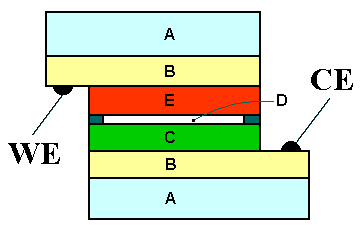
We use:*
* Other materials are under intensive investigation.
![]()
![]()
![]()
![]()
Coloration


The ECE can be colored by applying negative potential (-2.4 < U < 0 V) to the working
electrode (WE) for a time t < 60 sec.
Bleaching


The ECE can be bleached by applying positive potential (0 < U < +1.5 V) to the working
electrode (WE) for a time t < 60 sec.
The color intensity depends on (i) the value of the potential U and
(ii) the time t. The ECE maintains the color after removing
the potential for a long period of time (up to several days and more).

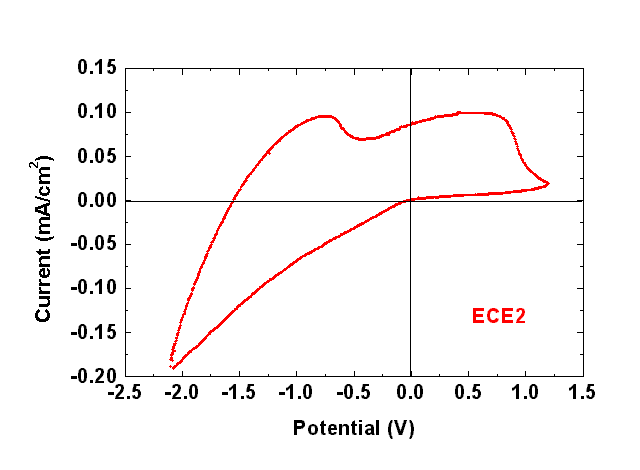
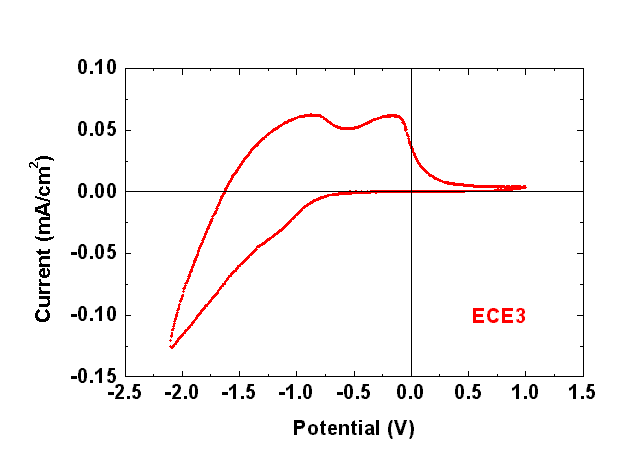
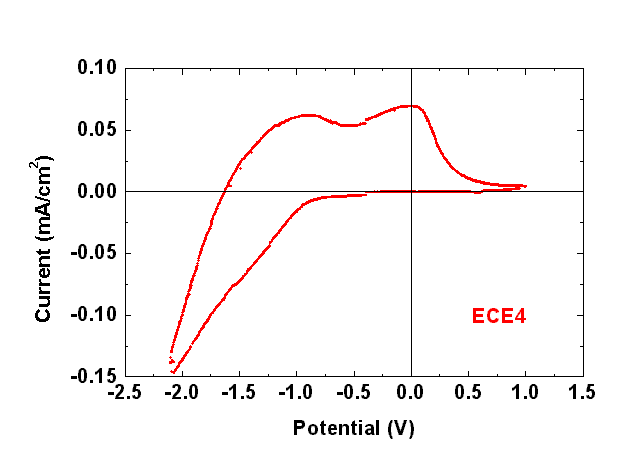
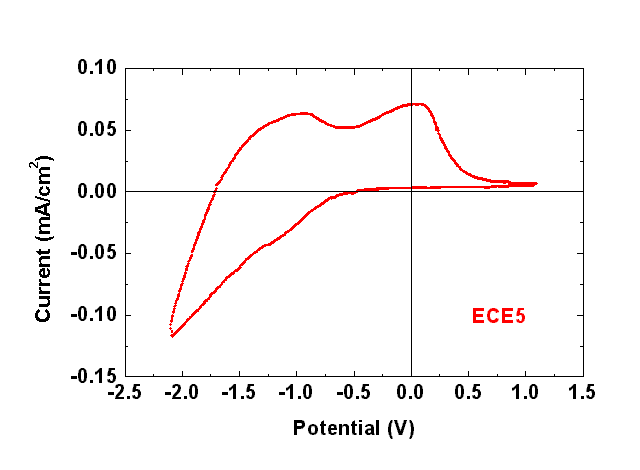
![]() Maximum Bleaching/Coloration Time
Maximum Bleaching/Coloration Time < 60 sec (usually about 10-20 sec)
![]() Working Potential
Working Potentialfrom -2.4 V (coloration) to +1.5 V (bleaching)
![]() Working Temperature (tested)
Working Temperature (tested)from 13 to 25 °C
![]() Working area
Working area about 50 mm x 50 mm
![]() Thickness
Thickness < 10 mm